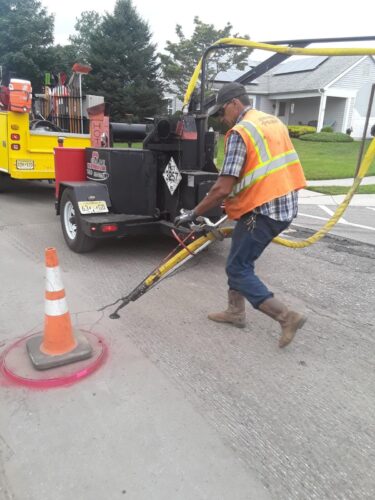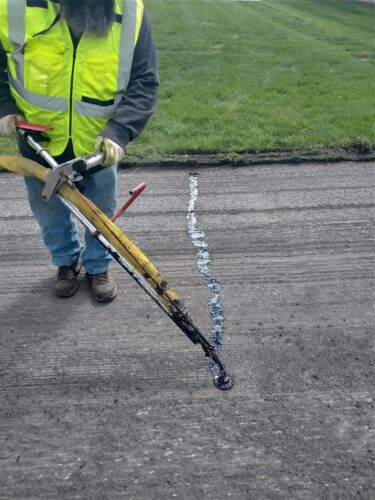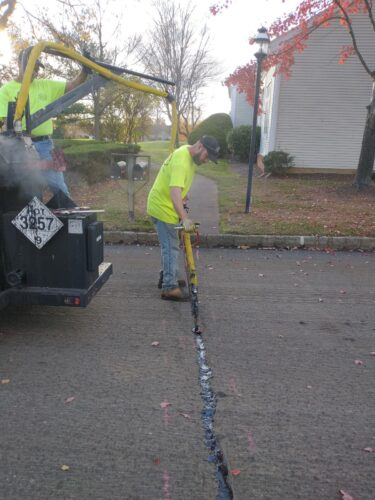Crack Filling &
Infrared Repair
Cracks of all shapes and sizes are common in pavement, and without timely intervention, they can lead to significant issues such as potholes and sub-base failure. Sealing these cracks is a crucial maintenance step that not only prevents further deterioration but also extends the life of the pavement by three to five years. This cost-effective treatment allows for immediate traffic use when a de-tacking agent is applied, highlighting its importance for maintaining road safety and reducing maintenance costs.
Crack Sealing Timing and Application
- Ideal before pavement shows severe distress.
- Suitable for cracks wider than ⅛ inch.
- Not recommended for alligator cracking or cracks over 1½ inches.
- Perform in spring or fall for optimal temperature conditions.
Surface Preparation
- Assess crack density for routing necessity; beneficial for better sealant adherence.
- Ensure cracks are clean and dry for maximum adhesion.
- Use compressed air and possibly a hot air lance for cleaning and drying.
Sealant Selection and Application
- Choose based on pavement condition, climate, and expected pavement movement.
- Follow manufacturer recommendations for heating and applying the sealant.
- Consider the sealant's flexibility or rigidity based on climate and pavement usage.
Best Practices for Crack Seal Placement
- Select the appropriate placement method (flush fill, overband, reservoir) based on the specific crack and pavement condition.
- Ensure complete crack filling for a thorough seal.
- Allow proper cure time before opening to traffic, potentially using sand or a de-tacking agent for immediate use.
Infrared Asphalt Repair
Infrared asphalt repair offers a smooth solution for mending surfaces by softening the existing asphalt with heat, allowing for easy integration of new or recycled asphalt into the softened mix. This method results in:
- Smooth overlays that blend new with existing asphalt seamlessly
- Precise elevation modifications near grates and utility access points
- Effective leveling of surfaces to correct dips and uneven areas
- Secure attachment of speed bumps to the current asphalt surfaces






